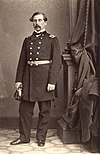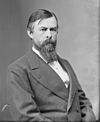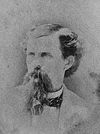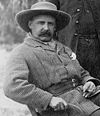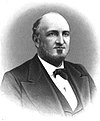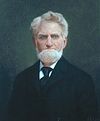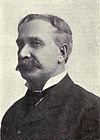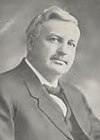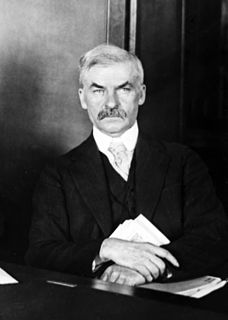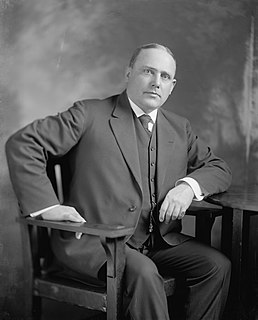It has been requested that the title of this article be changed to List of governors of Montana . Please see the relevant discussion on the discussion page. The page should not be moved unless the discussion is closed; summarizing the consensus achieved in support of the move. |
| Governor of Montana | |
|---|---|
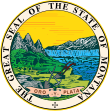 | |
| Style | The Honorable |
| Residence | Montana Governor's Residence |
| Term length | Four years, renewable once (limited to eight years in a sixteen year period) |
| Constituting instrument | Montana Constitution of 1889 |
| Inaugural holder | Joseph K. Toole |
| Formation | November 8, 1889 |
| Succession | Every four years, unless re-elected. |
| Salary | $108,167 (2013) [1] |
| Website | Official website |
The Governor of Montana is the head of the executive branch of Montana's state government [2] and the commander-in-chief of the state's military forces. [3] The governor has a duty to enforce state laws, [2] the power to either approve or veto bills passed by the Montana State Legislature, [4] to convene the legislature at any time, [5] and to grant pardons and reprieves. [6]

In the United States, a state is a constituent political entity, of which there are currently 50. Bound together in a political union, each state holds governmental jurisdiction over a separate and defined geographic territory and shares its sovereignty with the federal government. Due to this shared sovereignty, Americans are citizens both of the federal republic and of the state in which they reside. State citizenship and residency are flexible, and no government approval is required to move between states, except for persons restricted by certain types of court orders. Four states use the term commonwealth rather than state in their full official names.
The Montana National Guard consists of the Montana Army National Guard, and the Montana Air National Guard.
A pardon is a government decision to allow a person to be absolved of guilt for an alleged crime or other legal offense, as if the act never occurred. The pardon may be granted before or after conviction for the crime, depending on the laws of the jurisdiction.
Contents
- Governors
- Governors of Montana Territory
- Governors of Montana
- Other high offices held
- Living former governors of Montana
- Notes
- References
- External links
- See also
The current Montana Constitution, ratified in 1972, calls for a four-year term for the governor, commencing on the first Monday in January following an election. [7] The governor is term-limited to 8 years in any 16-year period. [8] The constitution provides for the election of a lieutenant governor for the same term as the governor. The two offices are elected on the same ticket; [7] a provision which did not appear in the state's first constitution, ratified in 1889. In the event of a vacancy in the office of governor due to resignation, disqualification, or death, the lieutenant governor becomes governor for the remainder of the term. If the governor is unable to perform his duties for any other reason, the lieutenant governor may become acting governor at the discretion of the state legislature. [9] The 1889 constitution made the lieutenant governor president of the state senate, [10] but this provision was removed in the 1972 constitution.

A ticket refers to a single election choice which fills more than one political office or seat. For example, in Guyana, the candidates for President and Parliament run on the same "ticket", because they are elected together on a single ballot question — as a vote for a given party-list in the Parliamentary election counts as a vote for the party's corresponding presidential candidate — rather than separately.
Montana has had 24 governors (ten of whom were actually born within state boundaries), consisting of 9 Republicans and 15 Democrats. The longest-serving governor was Joseph Toole, who served from 1889 to 1893 and again from 1901 until his resignation in 1908 with 11 years in office. The shortest-serving governor was Elmer Holt, who served less than 13 months when the previous governor died. The current governor is Democrat Steve Bullock, who took office on January 7, 2013.

The Republican Party, also referred to as the GOP, is one of the two major political parties in the United States; the other is its historic rival, the Democratic Party.

The Democratic Party is one of the two major contemporary political parties in the United States, along with the Republican Party. Tracing its heritage back to Thomas Jefferson and James Madison's Democratic-Republican Party, the modern-day Democratic Party was founded around 1828 by supporters of Andrew Jackson, making it the world's oldest active political party.

Joseph Kemp Toole was a Democratic politician from Montana. He served as the first and fourth Governor of Montana.



